As I’m writing this, it’s already the 8th day of this new year. High time to tell you a little about our activities during the last week of 2020.
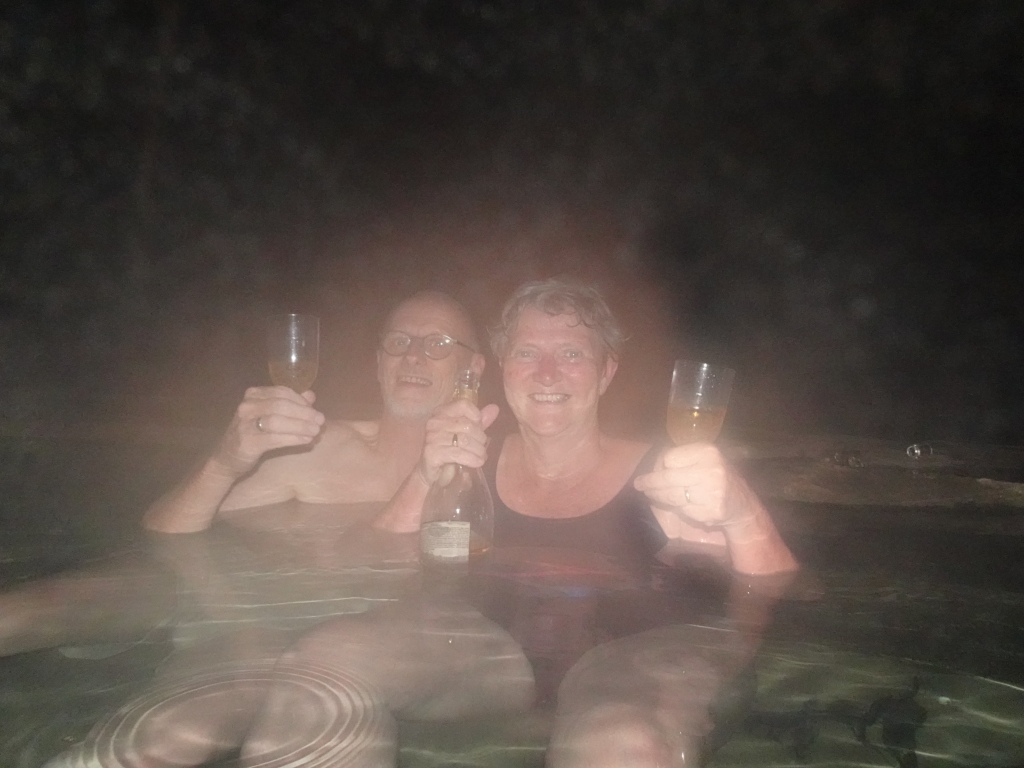
I’ll start, however, by wishing you all a very happy and healthy 2021, and I will accompany those wishes by a picture taken in the first few minutes of the year, while we were enjoying the hot spring water at Kapishya, in northern Zambia. More about that in a next post, let’s first share our experiences on the way there.
We’d hoped to take a longer trip through this part of the country, with some of our family, but… covid. And so it was that the two of us left Lusaka on Boxing Day, driving north from Lusaka through Kabwe towards Kapiri Mposhi. It’s a very busy road, with lots of heavy traffic – 30 tonne trucks with copper anodes or refined cathodes moving away from the copperbelt mines towards various borders, and fuel trucks going in the opposite direction. The quality of the road is just terrible, really showing the pounding that the inadequate foundations and surface are receiving from so much heavy traffic and heavy rain. We expected lots of stops by police, but we were just waved through, mostly. Some police posts were even deserted, it’s clear that Christmas had come the day before. At Kapiri Mposhi we turned eastwards towards Mkushi, and immediately the road conditions improved. (Less copper trucks, though still lots of fuel trucks coming from Tanzania.)
We’d reserved a camping spot at the very lovely Tembusha Forest Camp, located beyond Mkushi and about 10 kilometres off the main road. As we approached the site through the very green miombo woodland, the first big raindrops started to fall. By the time we reached the campsite, we were experiencing a real rainstorm, so that I had to wade ankle-deep through the water to help guide the Prado to a level parking spot, as close as possible to the roof of the shelter.
Tembusha has only three camping spots that are all just out of view of each other, and each is equipped with a shelter (thank goodness!) and a private bathroom. We parked as close as possible to the shelter, dashed under the roof and got a fire going. The rain continued to drum onto the shelter’s roof, but we enjoyed sitting by the fire and when there was a pause in the downpour, we erected our rooftop tent.
We had briefly considered moving our mattress into the bathroom, but decided against that when we spotted a couple of spiders on the walls. I have no problems with spiders on a bathroom wall (they eat mosquitoes, after all) but I just don’t like the idea of one of them maybe wandering over my face when I’m in dreamland….
Anyway, it was warm and dry inside our tent and we had a good night’s rest, accompanied by the occasional sound of rain on the roof. The next morning brought us sunny skies and a chance to properly explore the campsite.

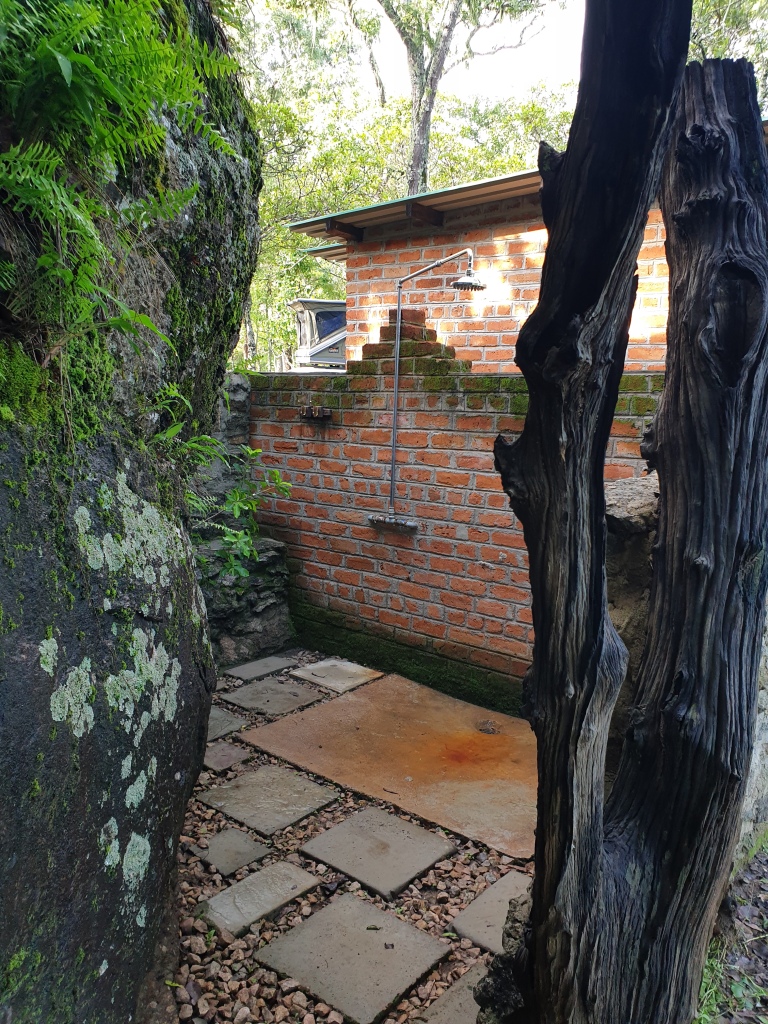
Each campsite has its own bathroom (with a bath!) and an outside shower. We opted for the latter, since you do not often get the opportunity to have a hot shower under the open sky in such beautiful surroundings. The rock face certainly provided the most natural bathroom wall that I’ve seen in a long time – more attractive than anything with imported tiles!

Resolving to definitely come back to this spot again in future, for a longer stay, we headed back to the main T2 road and on to our next destination: Mutinondo Wilderness. The T2 (“Great North Road”) stretches in a roughly northeastern direction, just skirting the southernmost tip of the Democratic Republic of the Congo, heading on to Mpika and eventually to the Nakonde border post with Tanzania. It follows the high ground, with the Muchinga escarpment (and below that, the valley of the Luangwa river) to the southeast. There are a number of waterfalls and other sites of interest to see along this road, but we wanted to get to the next campsite in time, and didn’t want to leave a vehicle packed with our stuff at some unguarded spot. So we decided to leave those visits for another day and pressed on towards Mutinondo.

Due to all the international travel restrictions, we all miss the contact with our families, even more so at this time of the year. We’d therefore agreed a time with our kids in faraway Europe and Hong Kong (all in different timezones to ours) to have a chat over Skype or Zoom or WhatsApp. We found a spot just off the main road, where there was some sort of telephone/internet connection, to see if this would work. The connection was with 3G only, so we had limited success, especially when we wanted to connect everybody at the same time. Unfortunately we didn’t manage that, we could either see, or hear everybody, but not at the same time. Eventually we managed to talk to everyone, but at different times. We stayed put for about two hours, had lunch, but it was still a disappointing outcome. Let’s hope that we can do better this year!

At the Mutinondo campsite, we chose a site on the edge of the camping area. It was relatively remote and very attractive, but required quite a bit of to-and-fro with the Prado to get close to the thatched roof shelter (bearing in mind the likelihood of more heavy rain!) and to park more or less level. We achieved the latter by driving onto some rocks with the back wheels.

Mutinondo Wilderness is a very interesting area with many kilometres of hiking trails and climbs available. The most striking feature is the existence of granite “inselbergs”, forming so-called whaleback hills. These granites were intruded into the surrounding rock about 1 billion years ago and the subsequent erosion of the country rock has left many of the granite plutons exposed. (To the non-geologists out there, this means that extremely hot magma pushed up into the surrounding rock, deep in the earth’s crust, and cooled, solidified there. When the somewhat softer surrounding rock was eroded away over the millions of years since then, the harder granites were exposed as we see them today.)


The Musamfushi River flows through this area, through some “dambo’s” (low-lying grassy areas) and over some very attractive waterfalls. These are not huge, like many others in Zambia, but there is something relaxing and peaceful about water flowing over rock in settings like these, especially in the absence of large tourist groups! If you visit Zambia for the first time, then the Victoria Falls are a must-see, but small waterfalls like these (and many others in this area) are very special to visit. The absence of crocodiles, hippos and bilharzia means that the rivers and pools are swimmable.

Walking through this beautiful area, one also sees a wealth of beautiful flowers and mushrooms/toadstools (I can never remember the difference) and I’ll show a selection in the photo’s below. Those of you who are knowledgeable, please feel free to identify!
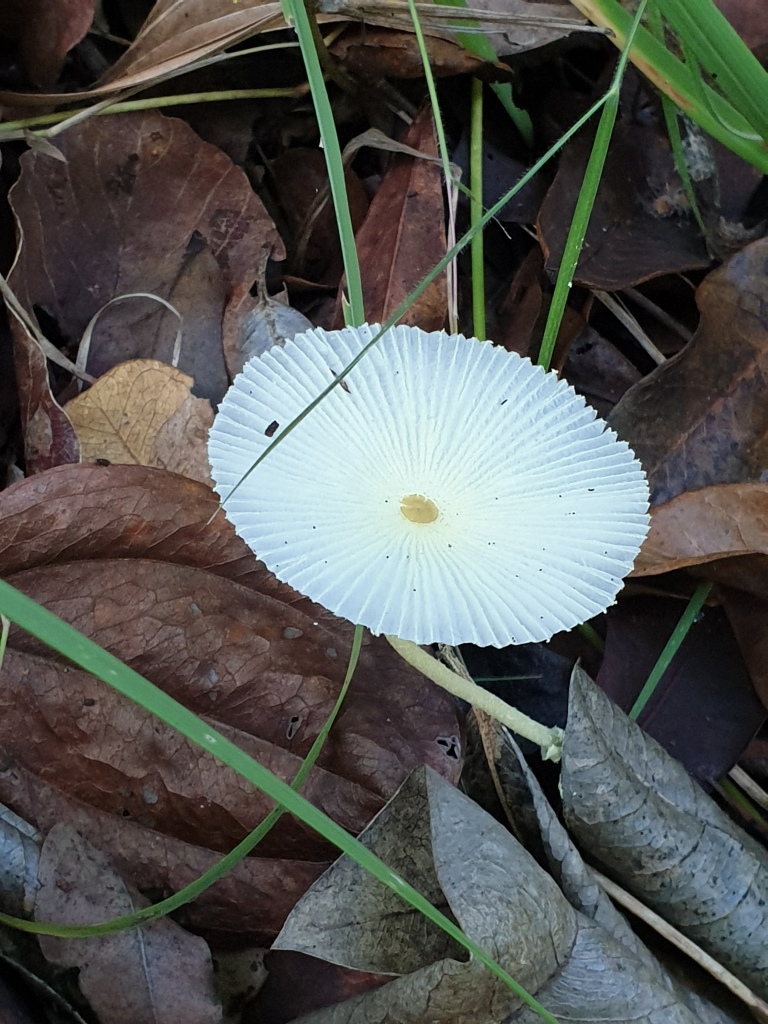






In many of my earlier posts from this part of the continent, you will have seen pictures of large animals. On this trip, however, we were travelling through parts of the country where large animals (other than cows) were absent or in hiding. So we focused on a few smaller but no less interesting animals. I’ve shown a few in the pictures below.

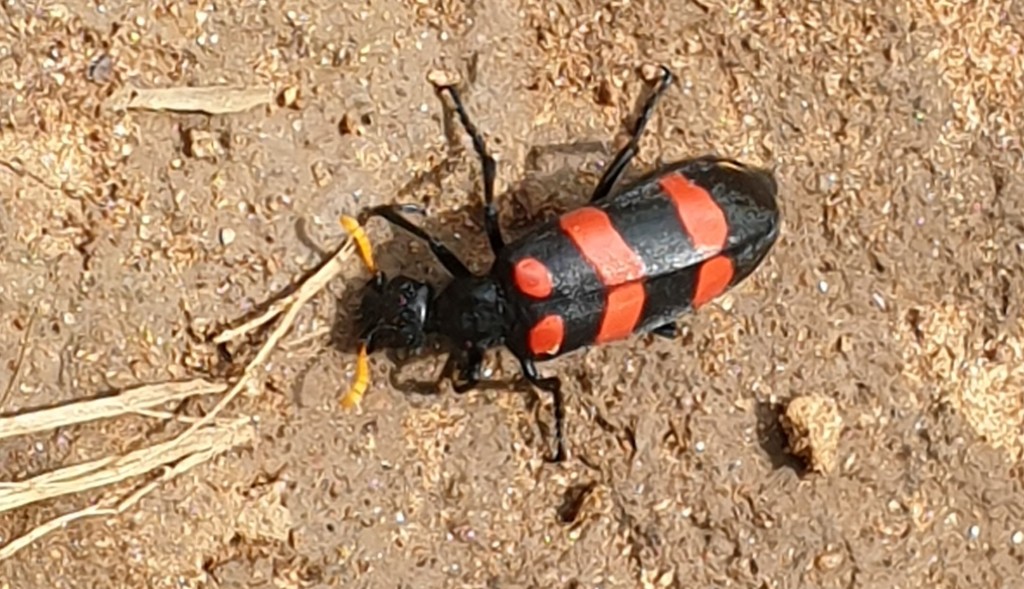
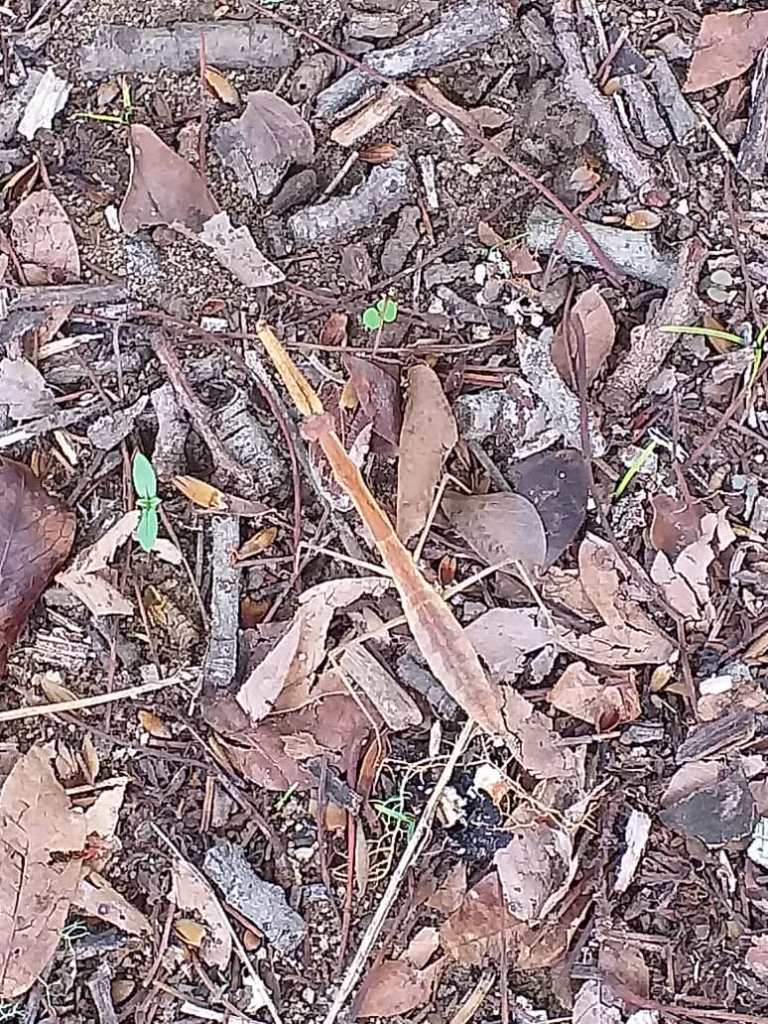
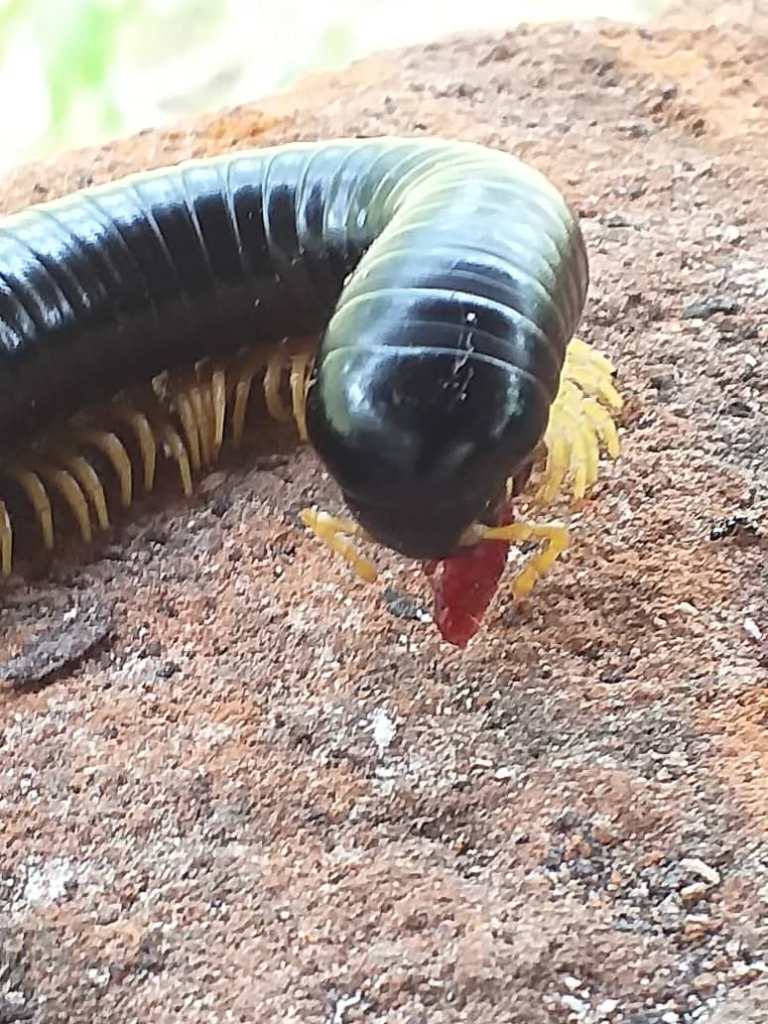
Watching little animals like this in the daytime, is delightful. At night, not always. One evening at Mutinondo, Marina took her laptop for an outing to the reception area (where there is a WiFi connection) to send an urgent email. About 20 metres from our campsite, however, she walked through a spiders web and the felt the spider running over her body, to get away. Lots of jumping and screaming resulted. Still, Marina is a hardy type and after we determined that there was no spider on her body or in her hair, she continued down the track and… repeated the experience in a second web. At that point she decided that the email was less important than she’d thought and could be sent the next day, instead.

I feel obliged to say something a bit more serious here. During much of last year, while large parts of the world were being locked down and many of you were unable to travel anywhere more interesting than to your fridge, I have been posting stories and images from current (and earlier) travels. I hope that I have not made you jealous (or not too much, anyway!) and that you’ve enjoyed “travelling” some parts of the world with us. Who knows when we’ll be able to actually travel far again. In the meantime, I’ll continue to share what I can from the local journeys that we can still take, and from earlier trips elsewhere.
Please stay careful and safe and healthy and look out for my next post, coming soon!
Mutinondo – ahhhh, one of my favourite places on earth. And it looks as if you had the place to yourself, like us in March 2019, towards the end of the “green” season. Enjoy it while you can!
LikeLiked by 1 person
Yes, it was a great place to walk around in. And relatively quiet. Most of the heavy rain seemed to dodge the area. We were only there for 2 nights, though, then stayed at Kapishya Hot Springs over the year-end. (More about that in the next post.) Now were are back in Lusaka, worried about covid and being as careful as possible… I trust that you guys are still enjoying SL?
LikeLike
Voor jullie ook nog de beste wensen. En wat ben ik jaloers als ik dit zie en lees. Prachtig.
Pieter
LikeLike
Steeds weer een plezier om jullie avonturen digitaal mee te beleven!
LikeLike
Yes Ron we really enjoyed your post during the year, You and Marina have had some fantastic outings during the year.
Happy new year and hope to see more of your fantastic excursions
Keep safe
Martin & Elma
LikeLike
Lieve Marina en Ron,
Zittend aan mijn keukenbarretje, mezelf een 10 minuten break te gunnen na een lange ochtend juf spelen voor onze 6-jarige, droom ik even weg naar de plekken die jullie bezocht en mooi vastgelegd hebben.
Jawel hoor, zeker jaloers! Al mag ik niet klagen met mijn uitzicht en geniet ik van de mooie wandelingen langs de dommel, maar wat zou ik graag even met jullie wisselen van plek!
De allerbeste wensen voor het nieuwe jaar en dat we elkaar dit jaar maar weer eens mogen treffen!
Liefs,
Esther en Henri
LikeLike
Hallo Esther en Henri,
Leuk om van jullie te horen! En leuk dat jullie even konden “meereizen” hier in Zambia en ook met eerdere reizen. (Jullie blijven uiteraard welkom om ook ECHT te komen meereizen, maar wie weet wanneer covid-19 dit weer zal toelaten…?) Wij zijn ook best jaloers op jullie, want we hebben Reinhardt en Quintin en hun vriendinnen in februari 2020 voor het laatst gezien, en Marcel en Charlotte al niet gezien sinds oktober 2019, toen zijn ze naar Hong Kong vertrokken, waar ze nu nog wonen. Onze reisplannen naar NL en HK voor 2020 zijn dramatisch ingekort, uiteraard, dus zijn we alleen maar lokaal met de auto weggeweest. (Trouwens, er komt nog een episode over het uiteinde van 2020 en het begin van 2021, die zullen jullie ook zien verschijnen.)
Wanneer we weer eens in NL zijn (het plan was tijdens maart, maar daar heb ik ook al een zwaar hoofd in…) dan komen we zeker weer eens langs. En dan wordt het toch echt eens tijd voor jullie om ons in Zambia op te zoeken…
Groetjes uit Lusaka, ook van Marina!
LikeLike
Pragtige fotos en interessante plekke in Zambia Ron & Marina
LikeLike
Are the hot springs near Shearwaingando?
LikeLike
Yes they are, look out for my next post…
LikeLike
Yes, Kapishya Hot Springs are quite near Shiwa Ng’andu, where that famous “Africa House” is. Both on properties belonging to the same family, descended from that English chap who built the house.
LikeLike